The Vikings: fierce seafarers, legendary raiders and figures of immense intrigue.
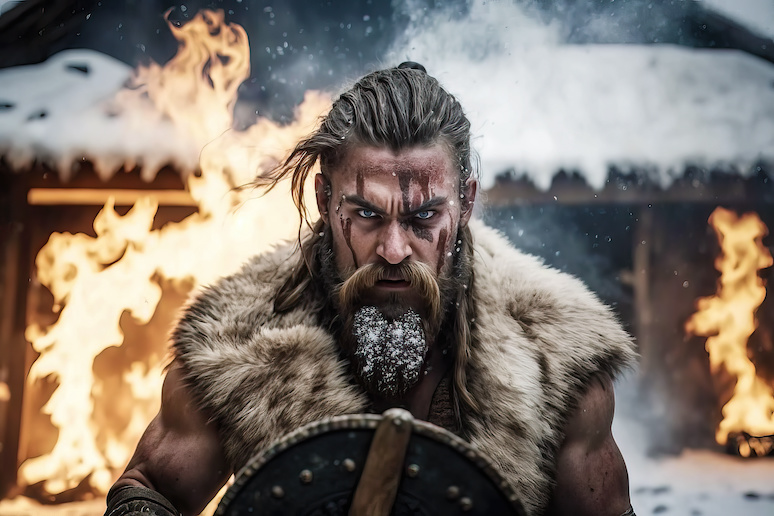
Popular culture has often painted these Norse warriors as towering giants, brandishing their axes as they descended upon shores, striking terror into the hearts of those who stood in their way.
From blockbuster films to spine-tingling novels, their alleged size and might has captured our modern imagination.
But how tall were the Vikings really? Would they truly have had the stature to send shivers down the spine of their foes – or modern humans for that matter? It’s time to separate myth from fact and explore the truth behind these legendary Norsemen.
So how tall were the Vikings?
The average height of a Viking male was about 173 cm (5 feet 7 inches), while Viking women typically stood around 157 cm (5 feet 2 inches).
Surprised? Many people are shocked to learn that these warriors weren’t as tall as they thought. However, while these numbers might seem underwhelming, they were actually taller than other Europeans of the same period.
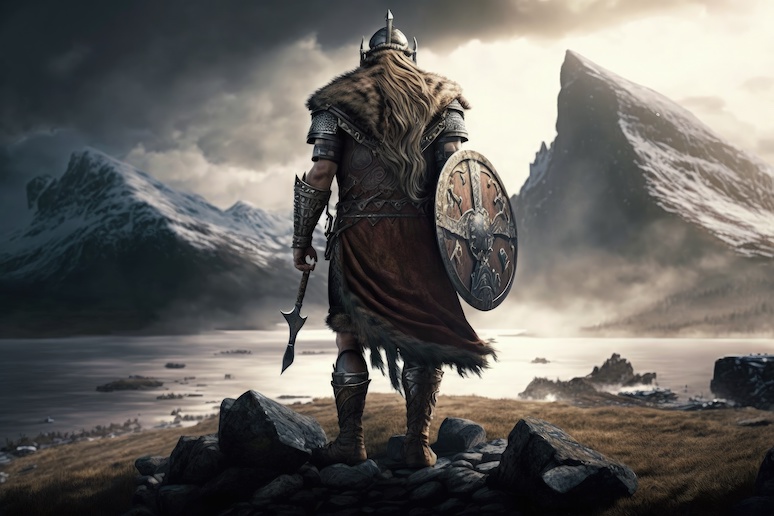
But although the Vikings were taller than other people from their era, they did not significantly tower over them, as often depicted in myths and popular media.
Fast forward to today, and the average modern man in many Western countries stands at around 175 cm (5 feet 9 inches). According to the best evidence we have, that’s just a smidge taller than the Vikings. Similarly, modern women hover close to the height of 163 cm (5 feet 4 inches), which is only two inches taller than the average Viking lady.
What made Vikings so tall?
Let’s dive into what exactly influenced the Vikings’ stature. Here’s a hint: it wasn’t just about their genes!
The Viking diet, for one, was a crucial factor. Living in the north of Europe, Vikings had access to an array of nutrient-rich foods. Fresh fish from the chilly waters, meat from livestock and a variety of crops from their well-tended fields (contrary to Hollywood depictions, most Vikings lived peaceful lives on or around farms).
This diet, rich in proteins and essential vitamins, ensured that they received the nutrition vital for optimal growth.
It wasn’t just what they ate that influenced the Vikings” height, but how they lived. The Vikings were an active bunch.
Sailing, farming, and even their famed raids meant that they were consistently on the move, and such physical activity can be a catalyst for height.
Their environment also played a role. Snug Viking longhouses, built to ward off the harsh Scandinavian winters, offered warmth and protection.
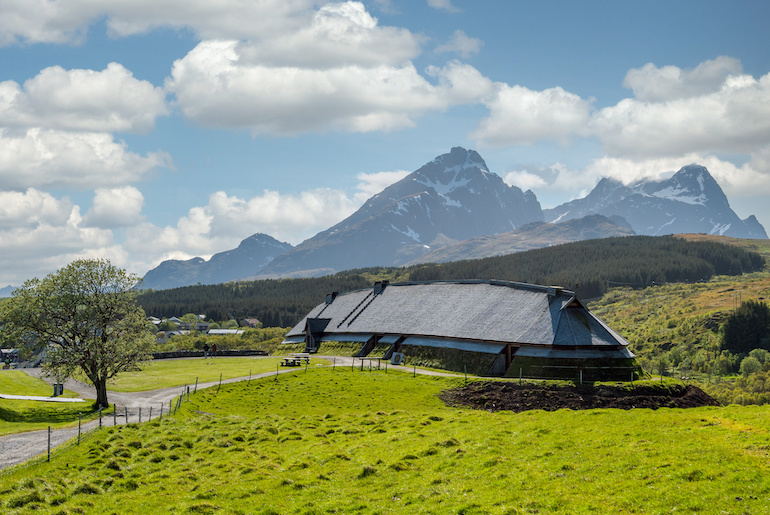
Growing up in a sheltered environment is known to be conducive to better physical development.
Lastly, there’s the social aspect. Contrary to the belief that they were always at war, many Viking communities were peaceful, thriving hubs.
This relative stability and safety allowed Viking children to grow without constant threats or disruptions.
In short, while they weren’t the giants we imagine, the Vikings did have a few height advantages in their corner. It’s not just about epic tales and big ships – even their height has an intriguing backstory!
The evidence for Vikings being tall
Researchers at Ohio State University looked into the height of the Vikings, by studying Viking skeletons and analyzing their bones.
More specifically, they measured the femur, that long thigh bone which can reveal a lot about a person’s height.
So, what did the experts find? By studying these ancient bones, they pieced together that Northern European men during the Early Middle Ages averaged around 173.4 centimetres.
Were Vikings bigger than other Europeans?
The straight answer? Yes, at least for a while. Ohio State University’s research into ancient bones didn’t just tell us about Viking heights; it gave us a snapshot of European height trends over time.
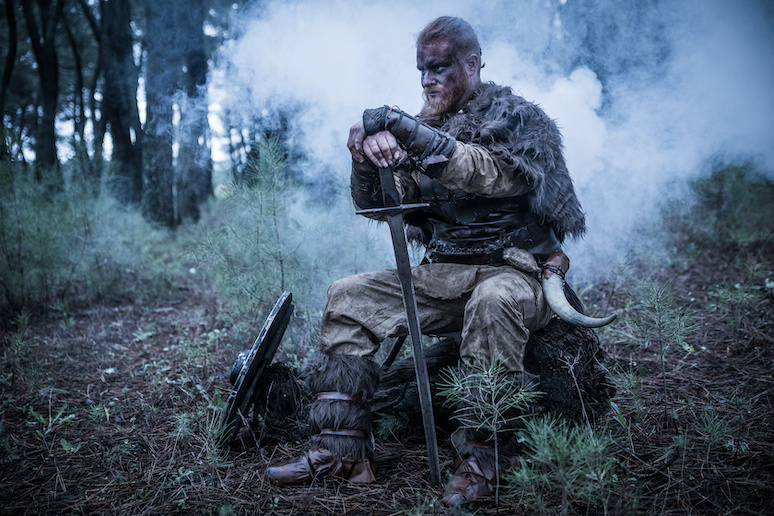
And here’s where it gets intriguing. Analysis by Richard Steckel, a professor of Economics at Ohio State University, which looked at skeletons from the 9th to the 19th centuries, found a height dip during the 12th to 16th centuries, hitting rock bottom in the 17th and 18th centuries.
By the 1700s, Northern European men were about 6.35 centimetres shorter. So what happened?
A mix of chilly climate changes, city life leading to health declines, political upheavals and farming shifts affected the average height.
But this reduction in average heights did a U-turn in the 20th century, as people regained their lost inches.
So, Vikings? Yeah, they had a good run height-wise. But Europe’s height journey, on the other hand, was a roller coaster shaped by climate, politics and even farming. Who’d have thought?
How food and the environment affected Vikings
Food wasn’t just about filling bellies for the Vikings: it was a pivotal factor in determining their stature. Right from childhood, the Vikings enjoyed a good nutritional diet, teeming with proteins and nutrients.
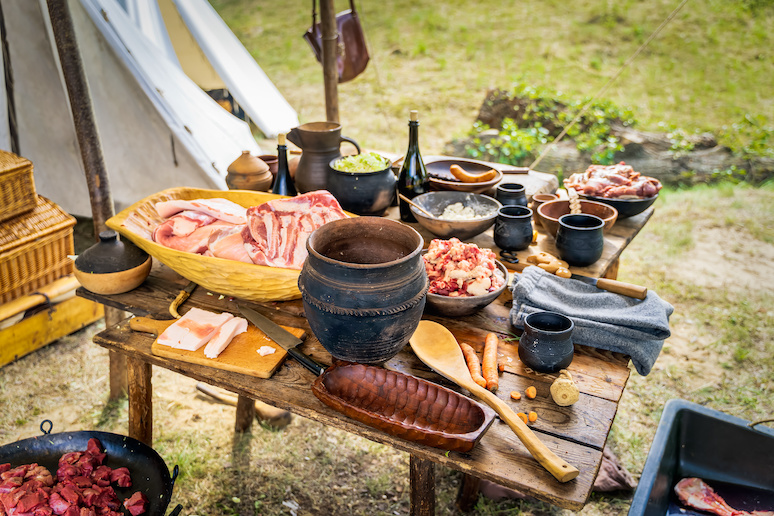
Such early dietary advantages laid the foundation for their adult height.
Their diet, abundant in fish, meat and dairy, was a nature-made height-boosting formula. Yet it wasn’t just what was on their plates that mattered.
The brisk Nordic climate, while challenging, indirectly supported their stature. The cold pushed them to consume more calories, helping them to bulk up.
Plus, the Viking era experienced some favourable environmental shifts.
Warm spells meant more abundant crops, leading to better nutrition. So, when you think about why the Vikings stood tall, remember it was a mix of hearty meals, a demanding climate and a dash of environmental luck.
Did people get smaller after the Viking Age?
We touched on this earlier, but let’s dive a little deeper into the mystery of shrinking statures post-Viking Age.
After the “towering” heights of the Middle Ages, a noticeable dip began. One of the major culprits? Mother Nature. The climate took a colder turn, which affected crops.
When the harvest isn’t bountiful, nutrition takes a hit. And as we’ve seen, nutrition plays a key role in determining height.
But the environment wasn’t the only challenge. As towns turned into cities, they became crowded with poor standards of hygiene.
Tight living spaces made it easier for diseases to spread like wildfire. Poorer health meant that people didn’t grow as tall as their Viking ancestors.
So, while the Vikings had the benefit of good food and open spaces, the generations that followed faced environmental and health challenges that made them a little shorter.
Apart from being tall, how else did Vikings look?
Beyond their noticeable stature, the Vikings had a distinct appearance that told tales of their rugged lifestyle.
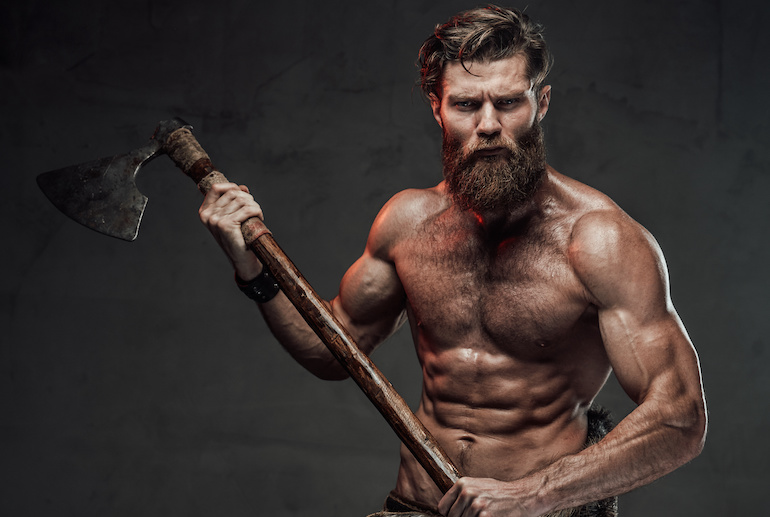
First off, they were likely quite muscular. After all, living off the land and sea required strength, as did their daily activities like farming and rowing.
Next, their teeth. Dental hygiene wasn’t exactly a priority, so many Vikings had notably worn and sometimes decaying teeth.
Some archaeological finds even show evidence of filed teeth, suggesting some form of body modification.
The Viking lifestyle also left its mark on their overall appearance. Outdoor living, combined with the trials of exploration and warfare, meant that weathered skin and scars were common.
Their lives were rough – and it showed on their bodies.
In wrapping up our journey through Viking appearances, it’s clear that the Vikings bore the marks of warriors, explorers and survivors.
Their bodies were reflections of the demanding world they lived in and the stories they had to tell.
See also:
Did Vikings have dreadlocks?
Did Vikings have tattoos?
Were there ever black Vikings?
What did Vikings drink?


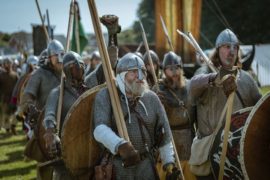

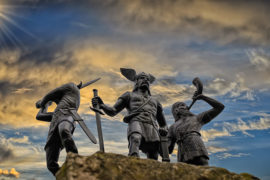


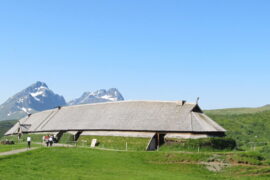

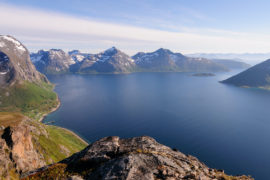
People also forget about footwear. The Romans described the Germanic tribes as being quite large , but the average Roman soldier wore sandals into battle. The Germanic tribes came from a much colder harsher environment and much more substantial foot wear. Even in my experience, I grew up on cattle ranches wearing western style cowboy boots and work boots. While I am only 5ft 10 everyone around me swears that I am over 6 ft tall. The difference between me wearing cow boy boots and work boots and them wearing tennis shoes.. I would hazard a guess that the Vikings… Read more »